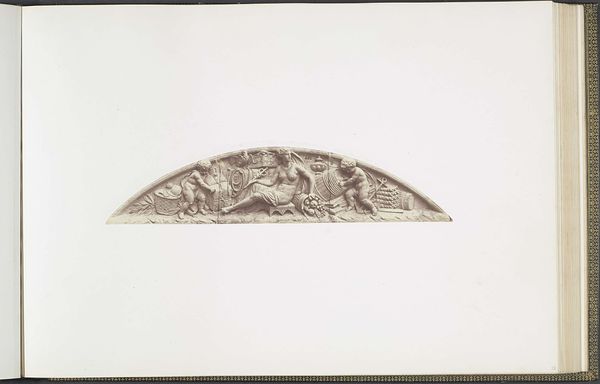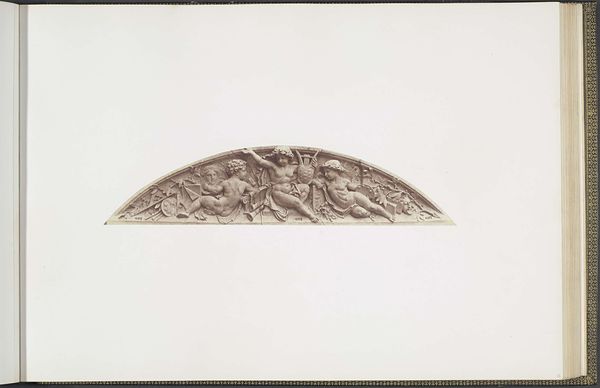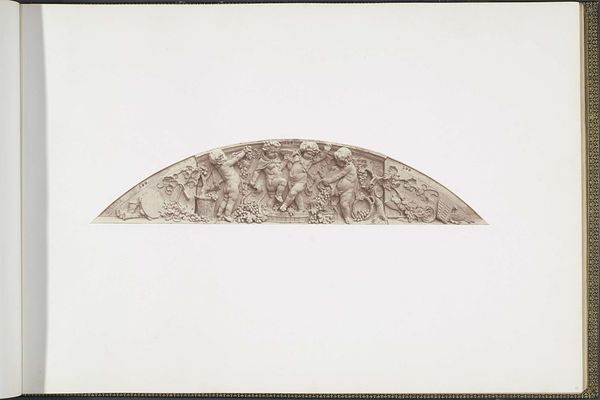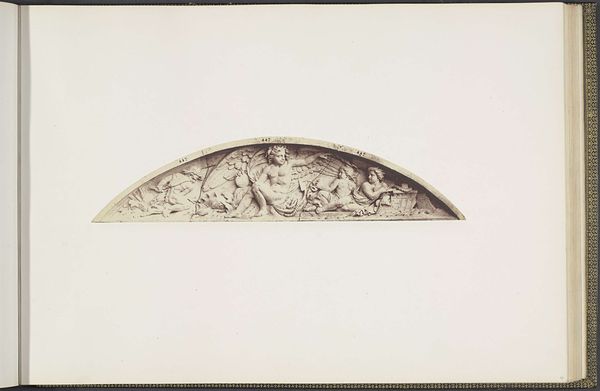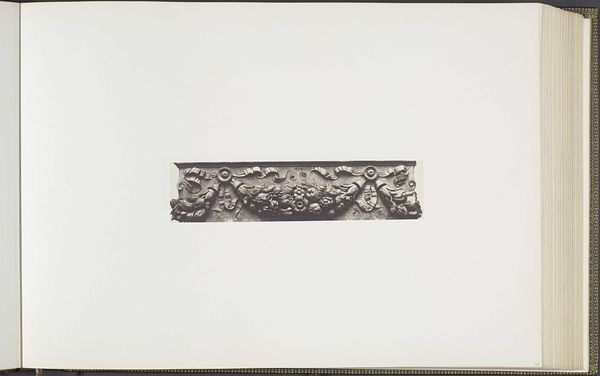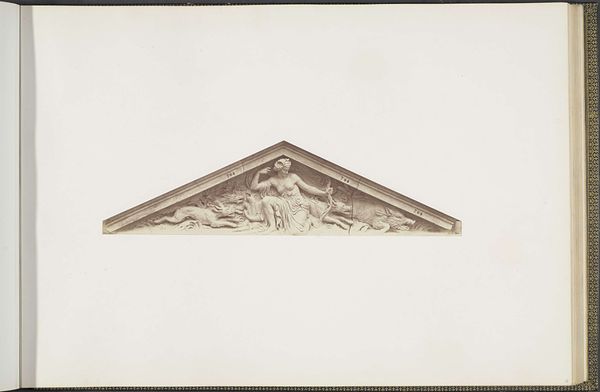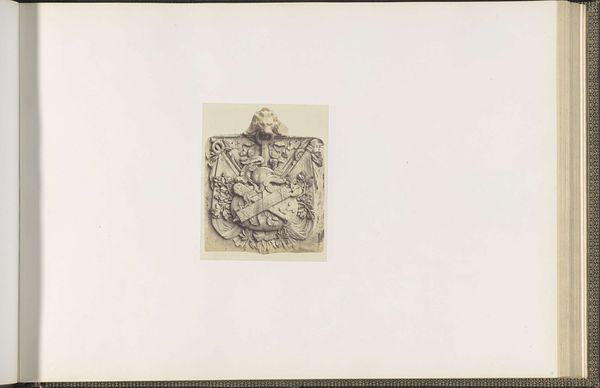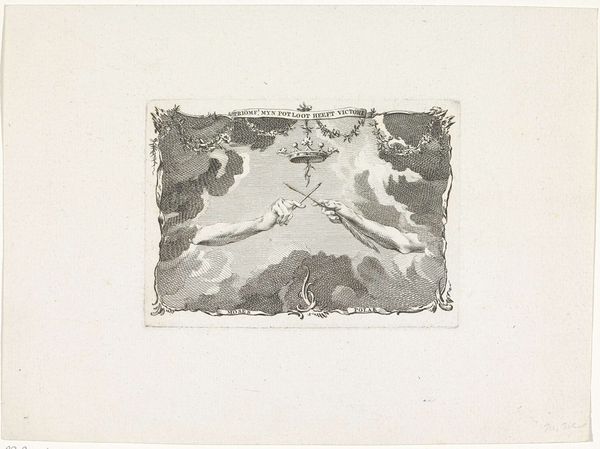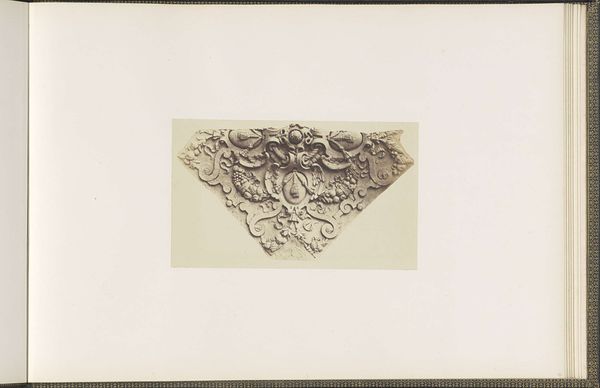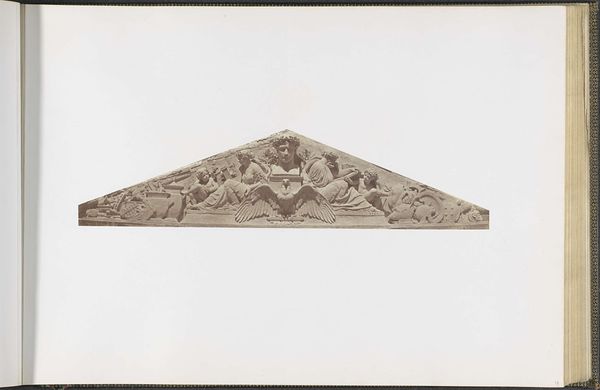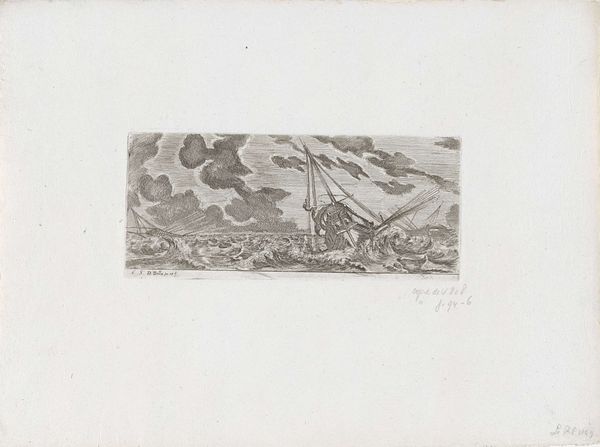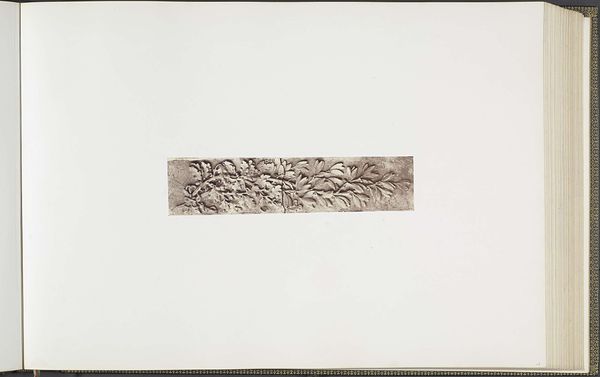
Gipsmodellen voor beeldhouwwerken op het Palais du Louvre: "L'Abondance" door Louis Veray c. 1855 - 1857
0:00
0:00
edouardbaldus
Rijksmuseum
relief, photography, sculpture, gelatin-silver-print
#
neoclacissism
#
allegory
#
relief
#
landscape
#
classical-realism
#
figuration
#
photography
#
sculpture
#
gelatin-silver-print
#
history-painting
#
academic-art
Dimensions: height 378 mm, width 556 mm
Copyright: Rijks Museum: Open Domain
Editor: This photograph, taken by Edouard Baldus around 1855-1857, captures Louis Veray's plaster models for sculptures on the Palais du Louvre, titled "L'Abondance." The print itself has a lovely warmth, almost sepia-toned. I’m curious about what this tells us about the social context of art production at the time. What are your thoughts on the photograph? Curator: Considering this work through a materialist lens, the photograph isn't just a reproduction; it's evidence of a complex system of artistic labor and distribution. We see the plaster models – functional objects, meant to be translated into a more permanent and ‘refined’ material. Baldus's photograph, a gelatin-silver print, then acts as another layer of mediation, transforming a three-dimensional object into a two-dimensional image for mass consumption. The ‘warmth’ you notice is also key - consider the chemical processes, the darkroom labour, involved in its making. What does that suggest about how art was commodified and consumed in 19th-century France? Editor: So it's not just about documenting the art, but the photograph itself becomes part of that system. The gelatin-silver print as another form of "labor." Curator: Precisely! Think about the audience for these photographs. Were they intended for other sculptors, potential patrons, or perhaps a broader public eager to experience the Louvre's grandeur from afar? Also, consider the plaster itself, often dismissed as preliminary or less valuable compared to bronze or marble. What kind of value do we assign to it? And how does photography influence our understanding of artistic production, blurring the lines between the original artwork and its multiple reproductions? Editor: I never thought about the photograph as a step in a much larger labor process like that! Curator: It changes our perspective, doesn't it? By focusing on materials, labor, and reproduction, we can challenge traditional hierarchies and appreciate the complex network of individuals and processes that bring art into being. Editor: This makes me want to look more carefully at the "lower" arts and their materials! Thank you.
Comments
No comments
Be the first to comment and join the conversation on the ultimate creative platform.
